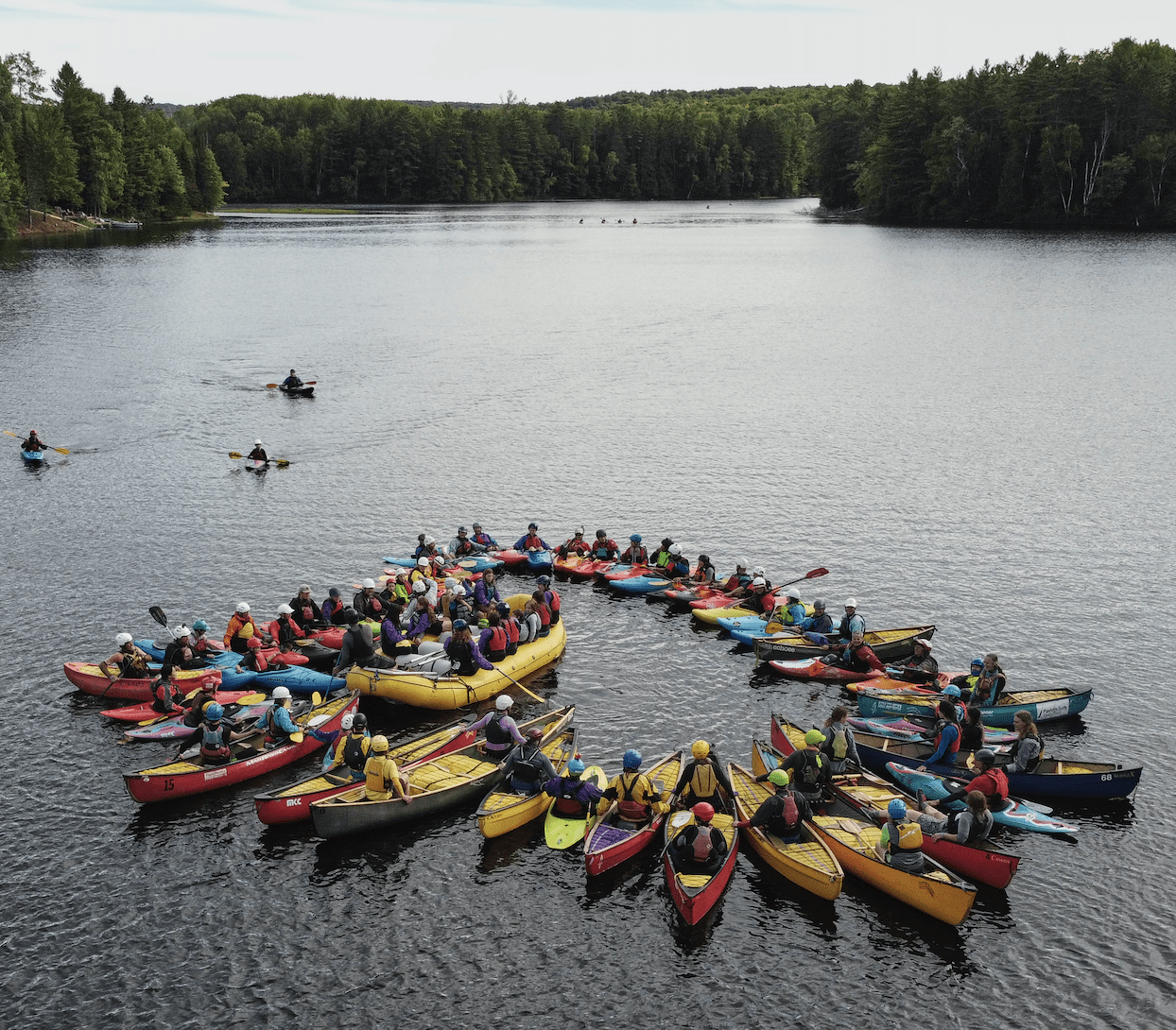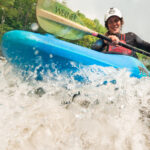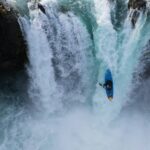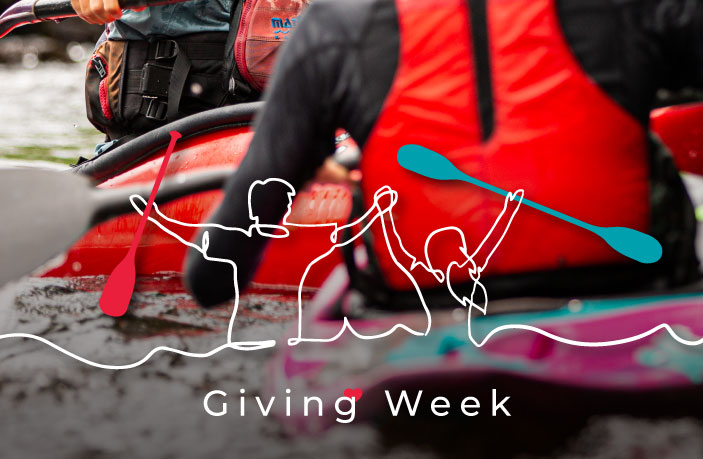Hi there, my name is Naomi and I’m a first-time whitewater kayaker. Before getting my feet wet and my hands, well wet, in this sport, I’ve watched videos of both highly skilled kayakers and everyday whitewater lovers, all embracing their own journey on fresh whitewater.

After being somewhat bombarded by the awesomeness of this sport, I just had to try it out. I was both nervous and excited to learn the ins and outs, so I committed to finding the right “kayaking school”. I needed someplace where I felt safe, well-instructed, and that would accommodate beginners with zero prior experience. After researching my kayaking options in Ontario and reading tons of Google reviews, I found the perfect wilderness/kayaking school for me, Madawaska Kanu Centre (aka MKC).
I’ve spoken to awesome instructors and kayakers at the resort, one of whom is Stefi Van Wijk. She is a 3rd generation kayaker and happens to be leading the operations at MKC. After speaking with her and following clear instructions, I gathered some tips and tricks that helped me feel more comfortable and confident on the river. If you are a first-time kayaker yourself, or just interested in the sport, I have some tips to help you out!
Here’s a beginner’s guide to whitewater kayaking 101:
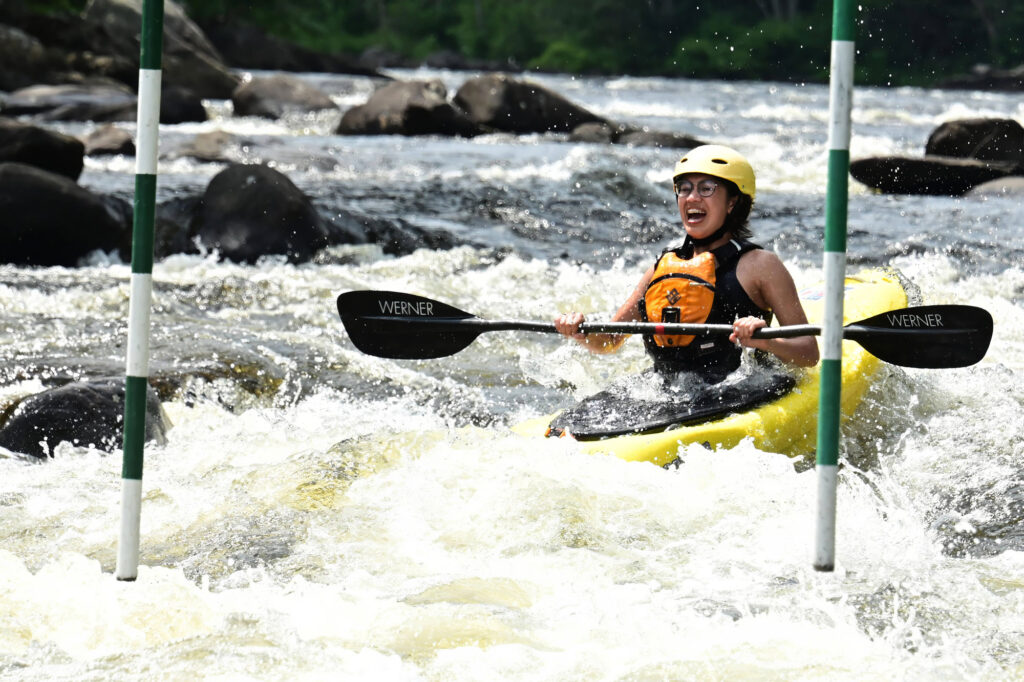
Safety First
Before heading out onto the water, it’s important to make sure that you have all the necessary safety gear with you. This includes appropriate clothing (such as a wetsuit when the water is cool and sun protection, almost always), a helmet, and closed-toe footwear. For anyone heading to MKC for their first time whitewater kayaking, they have great equipment for their lessons- high-quality and formfitting lifevests, helmets, wetsuit overalls (aka Farmer John’s), and brightly colored splash jackets, so be prepared to look good aha!
It’s crucial that you make sure everything fits well and is securely fastened, to be prepared for potentially swimming in currents. By wearing this gear, you’ll be prepared to learn what you need to learn on the river, safely!
Tip: Safety first! Always.
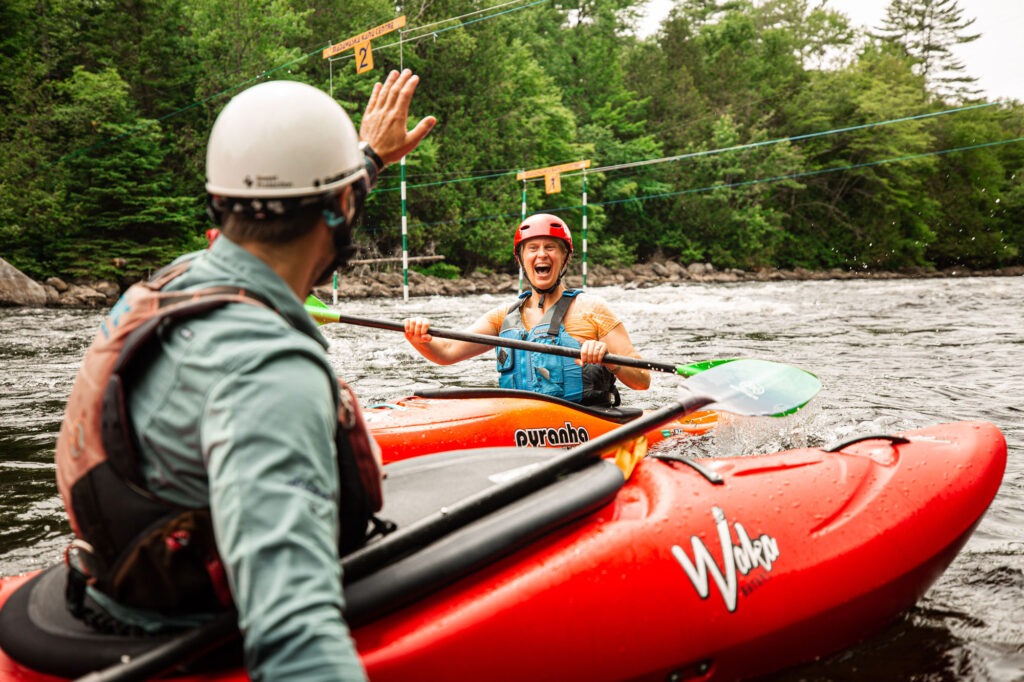
Feel All Your Emotions
Before my first go on the water, I was experiencing a range of emotions. From excitement, to fear, to anxiety then to excitement again. Stefi taught me a great trick: “Comfort to control”. This approach means that your instructor will help you prioritize your comfort and confidence before moving on to more technical skills. Madawaska Kanu Centre instructors are great at guiding and shaping your goals by addressing your concerns and understanding what you want to work on.
MKC instructors are top-tier and are great at helping you become a skilled and confident whitewater kayaker. In my case, Stefi truly helped me see what I wanted to accomplish and become more comfortable on the water. As I practiced, it became easier to gain control; I started to see the kayak as an extension of myself and not just an add-on, which aided in my experience on the river.
Tip: Let yourself get as comfortable as you can and then proceed with caution with your new-found skills.
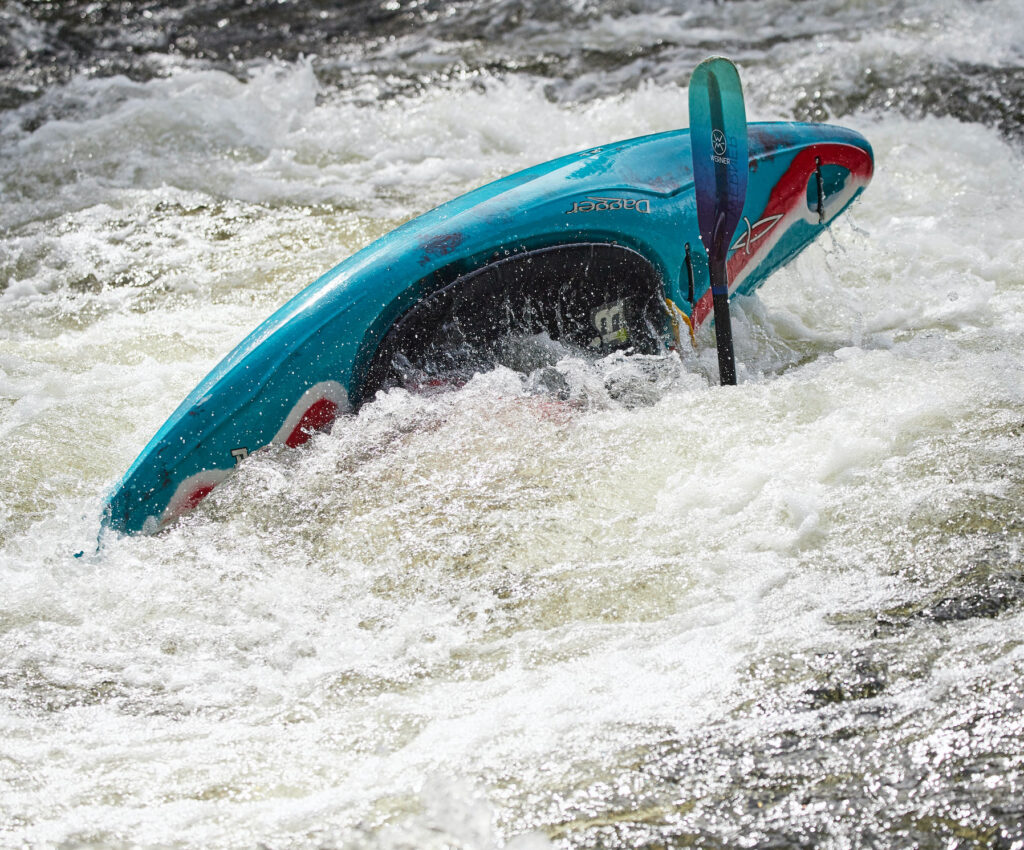
Embrace the Kayak
Kayaks come in different types and sizes, and it’s important to be in a properly fitted kayak to progress comfortably. You sort of go “kayak shopping” with your instructor onsite at MKC to see which kayak will be the best fit for you on the river. These whitewater kayaks come in various sizes, and your instructors will find you one with a good body weight to boat volume ratio for maximum success of the river.
Tip: If in doubt, go with the larger size. It will provide more comfort and more stability.
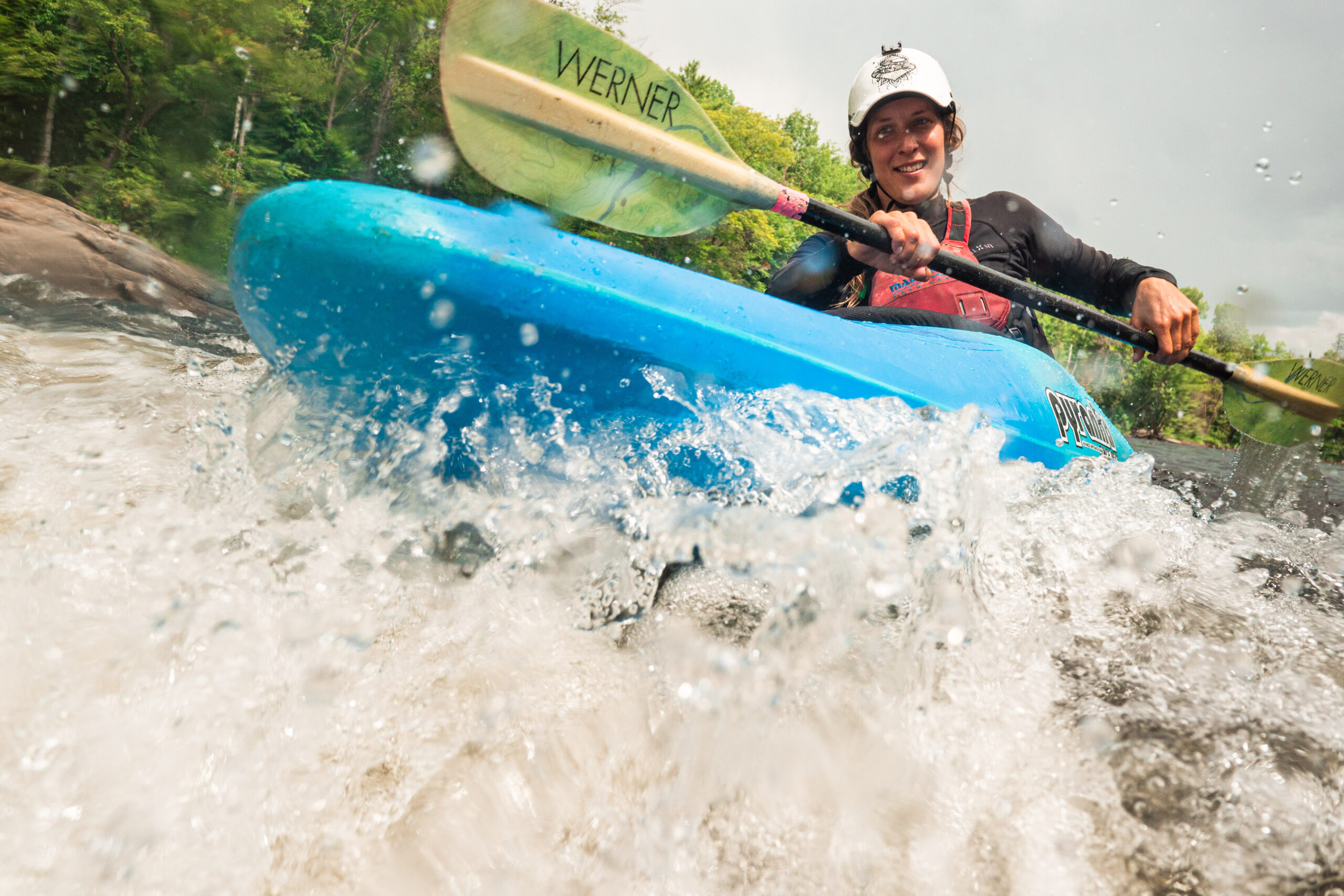
Paddle Away
As a beginner, I know it can be overwhelming to learn the essentials of a kayak paddle, but don’t worry, here’s a quick and easy overview. The long straight part of the paddle you hold onto is called the shaft. There are two blades, a “power-face” facing you, and a “non-power-face” facing away. Most blades have a top and bottom, marked by a logo or sticker. Hold the paddle with the logo facing you for a comfortable grip. Speaking of grip, don’t forget to check your grip often while you’re leaning forward.
Tip: Remember ‘the box’ position by forming a square between your paddle, chest, and arms at shoulder height. It’s key for all techniques.
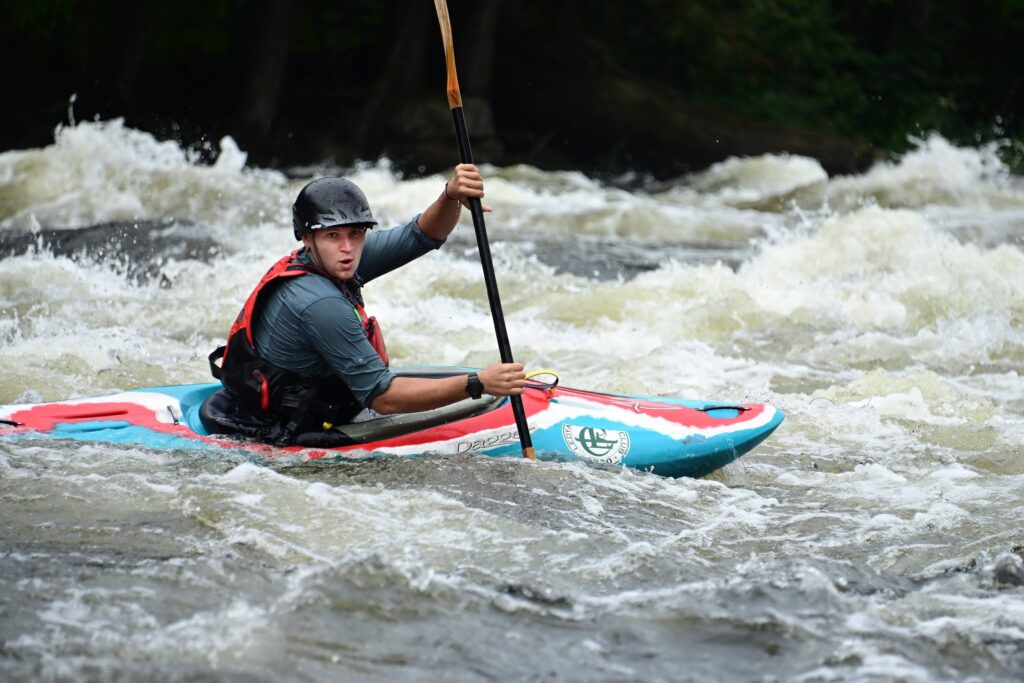
Shift to Control
I’ve learned that if you focus on learning how to control the kayak, you’ll have a lot more fun once you hit the moving water. To get started with that, it is a must to practice tilting the boat on edge, and holding that edge while paddling forward. This skill will help you navigate the currents when you’re ready for them!
Tip: Edge control is boat control.
Here are a few essential concepts to take note of for your paddling strokes:
Turning stroke, aka Sweep stroke aka C stroke
Horizontal shaft: When you’re trying to turn the boat, try to keep the paddle shaft as horizontal as possible to the water. This will help you be more effective with your turn stroke.
Torso Wind up: Before each stroke, twist your torso slightly in the direction you want to go. This will help you engage your core muscles and generate more power with each stroke.
Torso Un-Wind: Unwind your torso to pull the paddle forward and away from the kayak. This will help you move through the water with ease!
Forward paddling stroke
Range of Motion: When you’re doing the forward paddle stroke, make sure to insert the active blade into the water by your foot and pull it back past your knee. Don’t forget to release the blade before it passes your hip for a nice, long, and smooth stroke.
Vertical Paddle: To help move your boat forward, try to keep your paddle shaft vertical throughout the stroke. Keep your top hand at eye level and “punch” it out to maintain that vertical position. With much practice, you’ll see progress.
Tip: Before hitting the rapids, make sure to get the basic kayaking techniques down with your instructor. Some of these include how to hold the paddle, how to maneuver the kayak, and most importantly how to perform a wet exit—aka how to exit the kayak if you capsize.
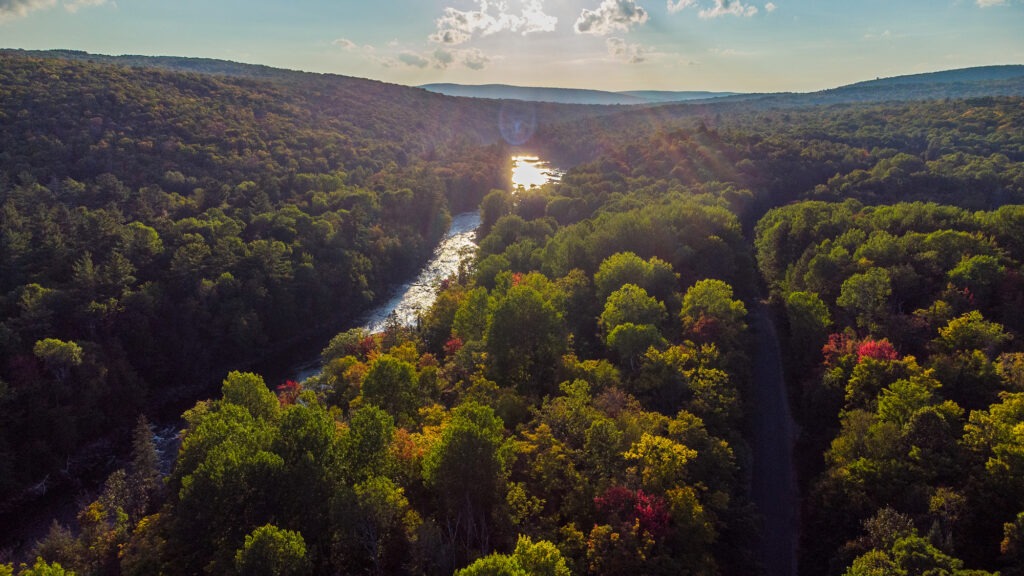
River Pointers:
Once you’ve learned the basics, it’s important to practice in calm water before attempting rapids. This will help you build that confidence I was talking about and improve your skills. Start in a pool or calm lake and practice maneuvering the kayak and performing a wet exit.
Choose the right river: The Madawaska River is amazing for learning because there are spots on the river for every skill level. The water is clean and you never feel like you’ll accidentally bump into another kayaker. When you’re ready to paddle in whitewater, choose a small section of a river that matches your skill level. Rapids are classified by difficulty, Class I and II can be better for beginners, while Class III and above are for more advanced kayakers. Apparently, this can be quite subjective. So, always look at any rapids you want to run before you run them, as well as what is downstream. Paddlers will often call this scouting a river or scouting a rapid.
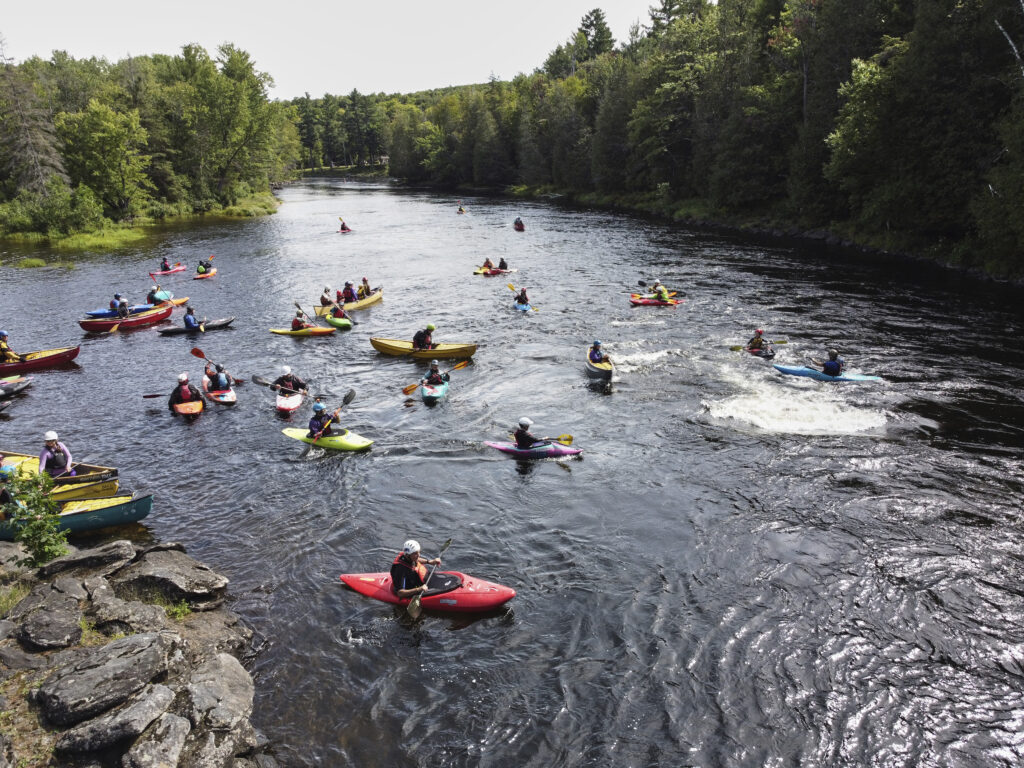
Have fun and respect the river:
Always paddle within your skill level. Never take unnecessary risks- it’s always more respectable to walk around a rapid (portage) if you’re not feeling up to it.
Approach paddling with a sense of play- to connect with the river, and other’s enjoying the river as well!
Refuse to litter or contaminate the water or wilderness surrounding it, and if possible, leave things in better shape than when you arrived.
Tip: The key to good kayaking technique is to stay relaxed, keep your body loose, and let the paddle do the work. With time, you’ll surprise yourself with what you know and how you perform on the river.
Thanks for brushing up on my quick and informative Kayaking 101 pointers that helped me on my whitewater kayaking adventure. This sport can be intimidating for beginners (especially at first), but with the right gear, instructors, knowledge, and eventually skill, it can also be incredibly rewarding.
Remember to start slow, practice in calm water, and always prioritize safety.
Happy paddling!
Check out our First Aid/ River Course/ Instructor Course: https://www.mkc.ca/certification-courses/
Browse our Courses: https://www.mkc.ca/whitewater-kayak-and-canoe-courses/
Related Blogs:
Sources:
MKC’s Kayak Instruction
